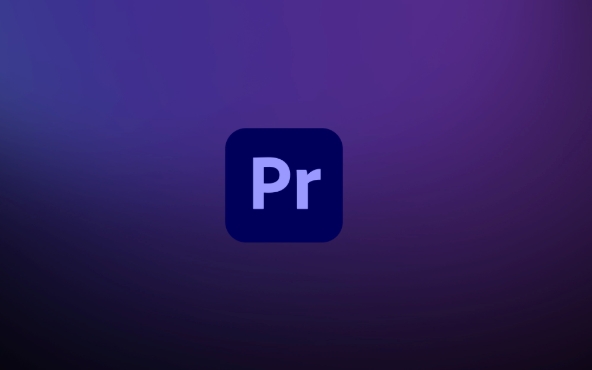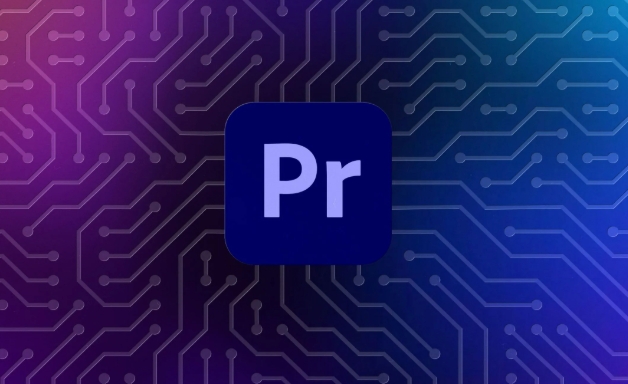how to automatically duck music in Premiere Pro
Jul 17, 2025 am 12:28 AMTo achieve audio ducking in Premiere Pro, use the Essential Sound panel for automatic adjustments or manual keyframing for more control. First, ensure dialogue and music are on separate labeled tracks. In the Essential Sound panel, select the music clip, enable “Auto Duck,” and choose the voiceover track. For better control, zoom in on the timeline, adjust volume keyframes around speech segments with S-shaped fades. Alternatively, use third-party plugins like Ducks! or FxFactory Pro for enhanced detection and batch processing. Keep tracks organized with labels and colors, and always monitor the mix with headphones.

When you're editing a video with voiceover or dialogue in Premiere Pro, having the music automatically lower in volume during speech makes your audio mix cleaner and more professional. This is called "audio ducking," and while Premiere Pro doesn’t have a one-click auto-duck feature like some other tools (like Audition or After Effects), you can do it pretty efficiently using built-in tools. Here’s how.

Use the Essential Sound Panel for Auto-Ducking
Premiere Pro’s Essential Sound panel has a built-in auto-ducking function that works well if your voiceover or dialogue track is properly labeled and separated from the music.

Here’s what to do:
- Make sure your dialogue or voiceover is on its own track, preferably labeled as "Dialogue" in the Essential Sound panel.
- Your music should be on another track, labeled as "Music."
- Open the Essential Sound panel (
Window > Essential Sound). - Select the music clip(s) you want to duck.
- In the panel, check the box for "Auto Duck", and choose the track containing your voiceover from the dropdown.
- Premiere will automatically adjust the volume of the music when the voiceover plays.
This method works best when there’s clear separation between the speech and music — meaning no overlapping clips or background noise messing up the detection.

Manually Keyframe Volume for More Control
If the auto-duck feature isn’t giving you the results you want — maybe the timing feels off or the fade isn’t smooth enough — you can manually create volume keyframes around your speech segments.
To do this:
- Zoom in close on the timeline so you can see where the speech starts and ends.
- Click the clip's volume line (the horizontal line across the clip) to reveal the control points.
- Drag down the volume just before the speech starts, then bring it back up after the speech ends.
- For smoother transitions, use S-shaped fades — ease into and out of the ducked section.
You’ll need to do this for each segment, but it gives you full control over how much and how quickly the music ducks.
Try Third-Party Plugins for Faster Results
If you edit voiceover-heavy content often, consider using a third-party plugin like Noise Industries' FxFactory Pro, Ducks! by Boris FX, or Zynaptiq PitchEnergy. These tools plug directly into Premiere Pro and offer smarter, faster auto-ducking than the native options.
Some advantages of plugins:
- Better detection of speech vs. background sounds
- Adjustable attack and release times
- Smoother transitions
- Batch processing for multiple clips
They might cost a bit, but they save time in the long run, especially if you’re working on podcasts, explainer videos, or tutorials regularly.
Keep Your Tracks Clean and Labeled
Whether you use auto-ducking or manual keyframing, keeping your timeline organized helps everything go smoother. Label your tracks clearly — “VO,” “Music,” “SFX” — and color-code them if it helps. The better separated your audio elements are, the easier it is to apply effects or adjustments without accidentally tweaking the wrong part.
Also, don’t forget to monitor your final mix with headphones or good speakers. Sometimes what looks right on the waveform doesn’t sound quite right to the ear.
That’s basically it — auto-ducking in Premiere Pro takes a few steps, but once you get the hang of the Essential Sound panel or your preferred workflow, it becomes second nature.
The above is the detailed content of how to automatically duck music in Premiere Pro. For more information, please follow other related articles on the PHP Chinese website!

Hot AI Tools

Undress AI Tool
Undress images for free

Undresser.AI Undress
AI-powered app for creating realistic nude photos

AI Clothes Remover
Online AI tool for removing clothes from photos.

Clothoff.io
AI clothes remover

Video Face Swap
Swap faces in any video effortlessly with our completely free AI face swap tool!

Hot Article

Hot Tools

Notepad++7.3.1
Easy-to-use and free code editor

SublimeText3 Chinese version
Chinese version, very easy to use

Zend Studio 13.0.1
Powerful PHP integrated development environment

Dreamweaver CS6
Visual web development tools

SublimeText3 Mac version
God-level code editing software (SublimeText3)

Hot Topics
 how to make text appear one letter at a time in Premiere Pro
Jul 08, 2025 am 12:02 AM
how to make text appear one letter at a time in Premiere Pro
Jul 08, 2025 am 12:02 AM
To display text letter by letter, use PremierePro’s built-in “Typewriter” animation preset or manually adjust the opacity or zoom of each character. 1. Use presets such as "Typewriter-Reveal" in the "EssentialGraphics" panel to directly apply the verbatim effect; 2. Enable character-by-character animation through the "EssentialGraphics panel" and select Opacity or Scale for customization; 3. Set Start and EndOffset to control the animation rhythm and combine keyframes to achieve dynamic changes; 4. You can adjust the offset, add blur or color change to enhance the effect. It is recommended that each letter lasts 0.1-0.2 seconds and is suitable for phrases rather than long paragraphs.
 how to fix red frames in Premiere Pro
Jul 07, 2025 am 12:16 AM
how to fix red frames in Premiere Pro
Jul 07, 2025 am 12:16 AM
The red box appears in PremierePro because the preview file is not generated or the material path is incorrect. Common reasons include just imported projects, material path changes, insufficient cache space, or failed proxy files loading. Solution: 1. Wait for automatic cache generation; 2. Manually generate preview rendering timeline; 3. Check and relink missing materials; 4. Clean and rebuild media cache. When using proxy clips, you should confirm that the proxy files are correctly associated and appropriately reduce the playback resolution to improve preview fluency.
 how to rotate video in Premiere Pro
Jul 04, 2025 am 01:33 AM
how to rotate video in Premiere Pro
Jul 04, 2025 am 01:33 AM
There are three ways to rotate videos in PremierePro. 1. Use the "Motion" option in the "Effect Control" to accurately adjust the rotation angle, which is suitable for fine operation; 2. Use the "Create Sequence from Clip" function to automatically correct the vertical video direction of the mobile phone, saving time and effort; 3. Use "Crop" and "Zoom" to adjust the screen to fill the screen and avoid black edges to ensure complete output quality.
 how to apply an effect to multiple clips in Premiere Pro
Jul 05, 2025 am 12:22 AM
how to apply an effect to multiple clips in Premiere Pro
Jul 05, 2025 am 12:22 AM
There are three ways to quickly add the same effect to multiple clips in PremierePro: 1. Use the "EffectChainer" tool to first apply the effect to one clip, and then click other clips one by one through the chain icon in the effect panel to apply it in batches; 2. By copying and pasting attributes, right-click the first clip with added effects in the timeline to select copy, then select other clips to right-click to select paste attributes, and only select video or audio effects to paste; 3. Use the adjustment layer to process the video effect, create a new adjustment layer and place it above the target clip, and drag the effect to the adjustment layer to affect all clips below it. The above methods can significantly improve work efficiency and are suitable for the needs of different scenarios.
 how to fade audio in Premiere Pro
Jul 05, 2025 am 12:50 AM
how to fade audio in Premiere Pro
Jul 05, 2025 am 12:50 AM
Adding a fade effect to audio in PremierePro can be achieved in three ways: 1. Use audio transition effects such as "Constant Gain" or "Exponential Fade" and drag directly to the beginning of the audio clip; 2. Manually add volume keyframes in the "Effect Controls" panel, and control fade speed and nature by adjusting the keyframe position and curve; 3. Use the "Trail Mixer" to drag the volume slider in real time to record the operation track, which is suitable for unified management of multi-track audio. Each method has its own advantages. Newbie can choose to quickly achieve the transition effect, advanced users are suitable for manual adjustment or use the track mixer to obtain more refined control. Finally, it is recommended that preview ensures that the audio transition is natural and smooth.
 how to normalize audio in Premiere Pro
Jul 04, 2025 am 12:16 AM
how to normalize audio in Premiere Pro
Jul 04, 2025 am 12:16 AM
NormalizingaudioinPremiereProadjuststheloudestpeakinacliptoatargetlevel,balancingvolumeacrossclips.1.Right-clickaclipandchoose“AudioGain…”2.Select“NormalizeMaxPeakto”andsetatargetlike-1dBor-3dB.3.ClickOKtoapply;thisscaleseachclip’svolumeuniformly.Itw
 how to create a cinematic look in Premiere Pro
Jul 06, 2025 am 12:07 AM
how to create a cinematic look in Premiere Pro
Jul 06, 2025 am 12:07 AM
To bring up a movie-like picture in PremierePro, the key is to adjust the basics and follow the following steps: 1. Use the LumetriColor panel for basic corrections and creative color grading to avoid directly applying presets; 2. Add FilmGrain effect to improve texture but not excessively; 3. Control the details of highlights and shadows, and combine local adjustments to enhance levels; 4. Set appropriate output parameters such as H.264 or ProRes, 10bit color depth to preserve the color grading effect.
 is Adobe Premiere Pro free
Jul 03, 2025 am 12:26 AM
is Adobe Premiere Pro free
Jul 03, 2025 am 12:26 AM
AdobePremierePro is not a free software. You need to subscribe to AdobeCreativeCloud. The main methods include monthly or annual subscriptions, and students and teachers can enjoy discounts; in addition, you can also choose free alternative software such as DaVinciResolve, Shotcut, OpenShot and Lightworks; you need to pay attention to the 7-day trial period, the possible deduction of credit card binding, and the cancellation in the middle will not retain the remaining time.






